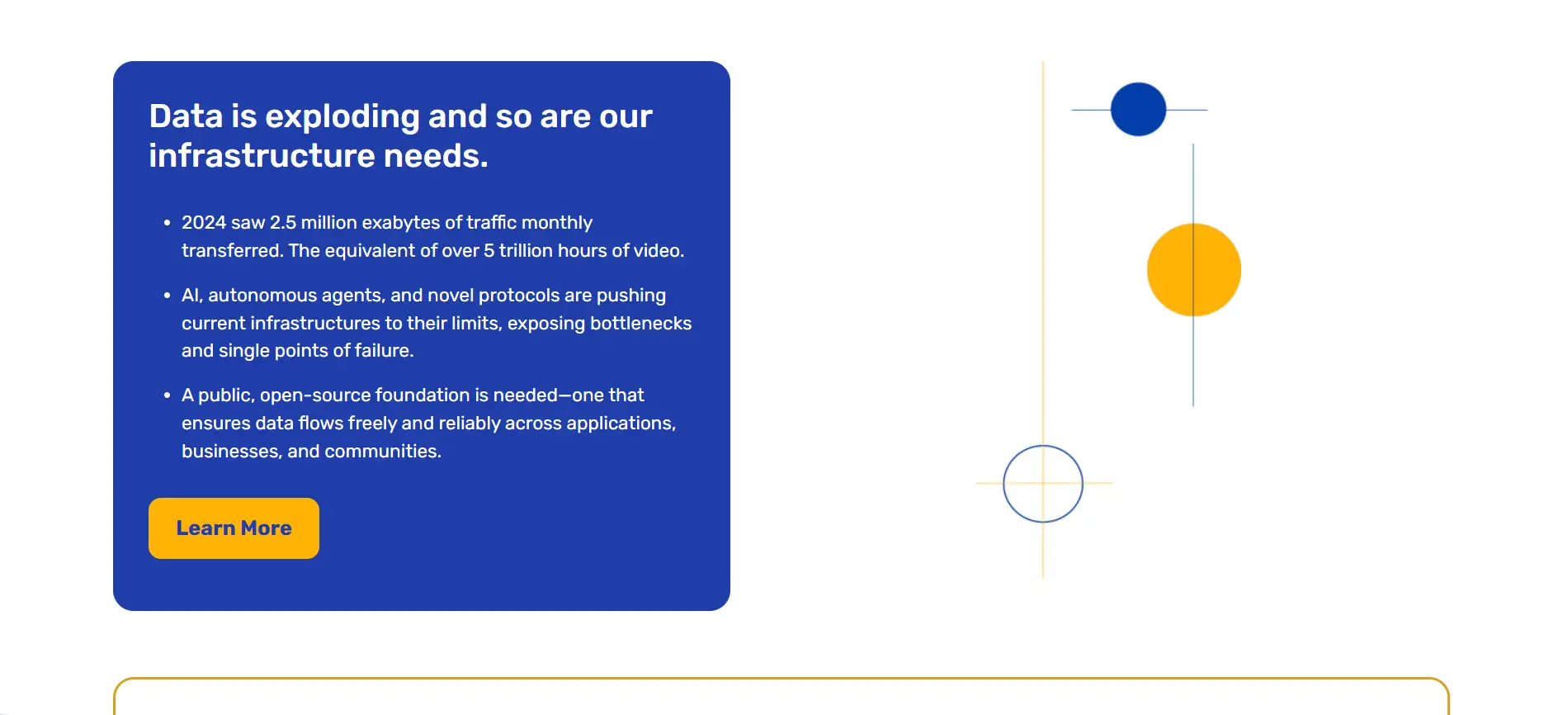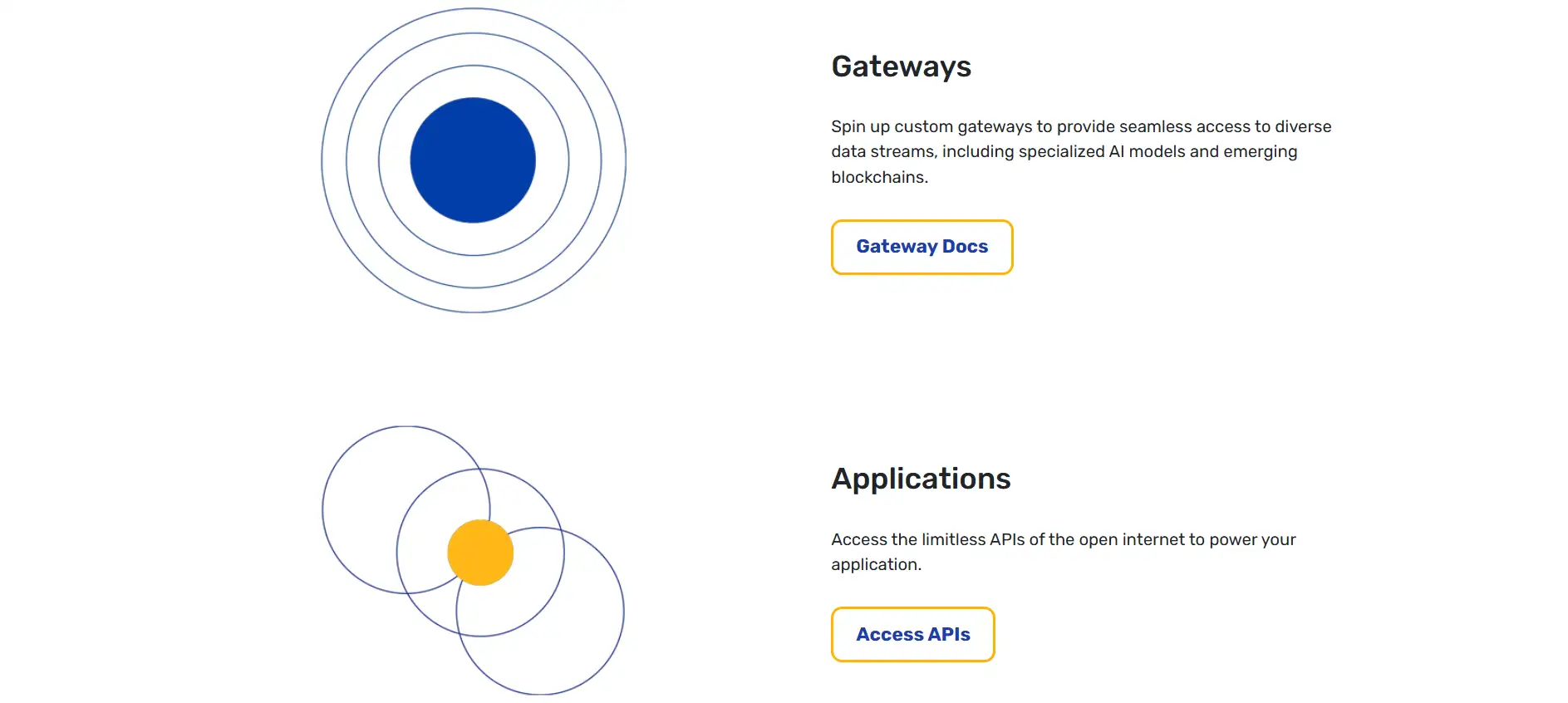About Pocket Portal
Pocket Network is a decentralized infrastructure protocol that delivers secure, scalable, and censorship-resistant access to public data. Designed to eliminate single points of failure and central bottlenecks, Pocket Network enables developers to interact with blockchain data, APIs, and public web resources through an unstoppable, self-healing network of nodes.
With the rollout of the groundbreaking Shannon upgrade, Pocket Network is transitioning into a truly permissionless gateway layer, where anyone can spin up data access infrastructure. As AI, autonomous agents, and novel protocols accelerate, Pocket Network offers the foundation to support this data explosion by providing decentralized, resilient, and performant access to the open internet.
Pocket Network addresses a critical flaw in the modern internet—centralized data access points. As more applications rely on APIs and public data streams, especially in the AI and blockchain spaces, single-provider infrastructures are becoming choke points. Traditional cloud services pose a central risk in terms of censorship, downtime, and monopolistic control. Pocket Network removes these limitations through a decentralized relay-based protocol.
Launched with a vision to become the backbone of data access for Web3 and beyond, Pocket Network operates a network of thousands of permissionless nodes that relay requests between applications and blockchains. To date, it has handled nearly one trillion relays and currently powers critical infrastructure for AI models, dApps, and enterprise tools worldwide. The protocol allows developers to access any open API through a distributed network that is always on, self-repairing, and powered by crypto-economic incentives.
The recent launch of the Shannon Upgrade marks a significant evolution. Named after Claude Shannon, the father of information theory, this upgrade introduces new capabilities like relay mining, optimistic proving, and permissionless gateways. It also migrates Pocket to a fully native Cosmos chain with enhanced encryption (secp256k1). These changes make Pocket more scalable, secure, and extensible, opening the door for developers to launch custom access layers using tools like the Path Framework.
Another cornerstone of this upgrade is Path, an open-source toolkit that allows anyone to create a custom gateway in minutes. It lets you control how your APIs are accessed, define quality of service, and manage usage without centralized approval. This modularity makes Pocket a flexible solution not just for dApps but also for data-intensive use cases in AI, analytics, and real-time systems.
When compared to centralized providers like Infura, Alchemy, and QuickNode, Pocket Network stands out by eliminating gatekeeping and infrastructure lock-in. Unlike those platforms, Pocket’s decentralized design ensures that developers are not dependent on a single vendor. It also removes pricing opacity and centralized API throttling by letting anyone join or operate the network.
With support from over 10,000 node operators, hundreds of active contributors, and tools like POKTScan for transparency and analytics, Pocket Network continues to build the infrastructure backbone of a truly open internet.
Pocket Network offers an innovative set of benefits and features that differentiate it from traditional API infrastructure:
- Decentralized API Access: Avoid centralized failures with a network of over 10,000 global nodes providing unstoppable data access.
- Permissionless Gateways: Use Path to launch your own custom gateway with full control over data sources, QoS, and policies.
- Relay Mining: Earn rewards for contributing infrastructure via relays—no need for specialized hardware or institutional backing.
- Optimistic Proving: Introduces efficient, scalable traffic verification without heavy consensus or bottlenecks.
- Native Cosmos Integration: The Shannon upgrade makes Pocket a full Cosmos chain, supporting Keplr and other Cosmos wallets.
- Security & Redundancy: Self-healing architecture and encryption upgrades ensure secure and resilient infrastructure.
- Open Participation: Developers, node operators, and gateway builders can all join permissionlessly without intermediaries.
- Real-Time Data Transparency: Track metrics, relay counts, node performance, and token economics through POKTScan.
Getting started with Pocket Network is straightforward for both developers and infrastructure providers:
- Create a Wallet: Use the official Pocket Web Wallet or connect via Keplr for Cosmos-native compatibility.
- Buy POKT: Purchase POKT from supported exchanges listed on the Pocket Network homepage to participate in staking or node operations.
- Explore Shannon: Dive into the Shannon upgrade through the official upgrade FAQ to learn how to migrate, stake, or run a node.
- Run a Node: Become a provider of decentralized infrastructure by following the node setup documentation.
- Build with Path: Use the Path framework to spin up a custom gateway and manage data access on your terms.
- Integrate APIs: Access public data across blockchain protocols and web services via the Pocket Gateway—ideal for dApps, bots, or data-driven tools.
- Join the Community: Participate in the Pocket ecosystem via community forums, GitHub, and upcoming developer initiatives.
Pocket Portal FAQ
The Shannon upgrade is not just a technical fork—it's a redefinition of what Pocket Network stands for. It transforms Pocket into a fully permissionless infrastructure layer capable of supporting any open data—not just RPC. It introduces relay mining, optimistic proving, and moves Pocket to the Cosmos ecosystem, enabling higher scalability and modularity. With Shannon, Pocket evolves from blockchain-specific infrastructure to a universal data access layer.
Yes, you can run your own gateway using the Path framework, a tool that allows developers to launch and manage custom data access layers on top of Pocket Network. Unlike nodes, which handle relaying and validation, gateways focus on how users interact with data—managing APIs, QoS, pricing, and security. Gateways give builders full control over their traffic and revenue models, making Pocket a truly modular infrastructure for any open-data project.
Not at all. Pocket Network is built with self-healing architecture. If one node goes offline, the protocol automatically routes requests to other nodes in the network. This ensures zero downtime and censorship resistance. The design eliminates central points of failure, unlike traditional services like Infura or Alchemy, which depend on centralized server farms.
Absolutely. One of the key goals of Pocket Network post-Shannon is to serve high-frequency use cases like AI models, autonomous agents, and data-driven dApps. The network’s relay architecture and ability to handle diverse protocols make it ideal for powering systems that require real-time, decentralized data streams at scale.
POKT remains the core coordination token for the network. It’s used for staking, relays, and incentivizing infrastructure providers. While the network supports permissionless access and custom gateways, all economic activity—whether you’re running a node, gateway, or paying for traffic—flows through POKT. You can buy it via the Pocket Wallet or supported exchanges listed on Pocket Network.
You Might Also Like












